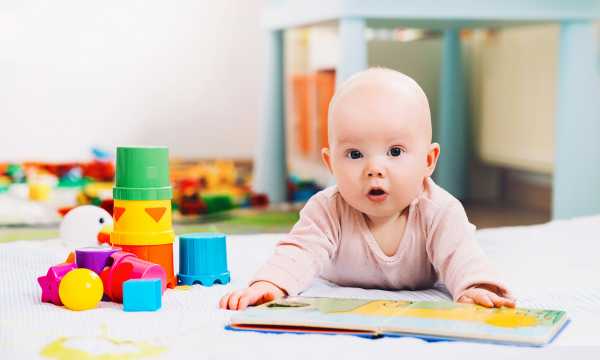ad
Discover how activities for children at home can be simple and amazing.
If you are looking for activities for children that are both fun and educational, this article is for you!
The daily routine at home can be a challenge for parents, especially when children want to stay entertained and burn off energy. But the truth is, you don’t need big investments or huge spaces to guarantee happy moments and family learning.
With creativity and attention to what each child likes, it’s possible to turn everyday life into a true adventure.
Throughout this text, I will show you easy ways to stimulate imagination, burn off that built-up energy, and even respect calm moments, without anyone getting bored.
And the best part: all this is designed so you can enjoy together with your children, strengthening bonds and making family time even better.
1. Educational Games: Learning and Having Fun at the Same Time.
Playing is the most natural way for children to learn. That’s why educational games are great for developing cognitive, motor, and social skills while having fun.
You can bet on memory games, simple puzzles, and even telling stories with homemade puppets. These activities for children stimulate concentration, creativity, and help develop language.
Also, including numbers, letters, and shapes in the games makes learning lighter and more natural, without the pressure that often causes resistance.
The great thing is these activities for children can be adapted for different ages and preferences, ensuring everyone participates and feels healthily challenged.

Stories with homemade puppets (Google Source)
2. Activities for Children Using Household Materials
You don’t need to buy expensive toys to create amazing moments. Use what you have on hand and turn simple objects into real treasures for the little ones.
- Cardboard boxes can become castles, cars, or even sets for pretend play;
- Spoons, pots, and lids can be used to create improvised musical instruments;
- Old clothes and fabrics can turn into costumes to stimulate theater and imagination;
- Paper, pencils, and paints give wings to creativity with drawings and collages;
With these materials, activities gain a special flavor, because besides being fun, they help develop motor coordination and sensory perception.
3. Family Games: Fun for Parents and Kids
Nothing like a group game to strengthen bonds and create emotional memories. Family games are a great opportunity to involve parents in the children’s world.
Some ideas that please all ages:
- Personalized memory game with family photos;
- Obstacle course in the living room using pillows and chairs;
- Shadow theater with flashlights and hands;
- Treasure hunt with simple clues spread around the house;
To make the game even more special, how about creating small rewards, like stickers or extra reading time? This keeps enthusiasm high and turns playtime into a complete experience for everyone.

Shadow theater with hands (Google Source)
4. Creative Activities: Arts, Drawing, and Imagination Without Limits
Let creativity flow without rules! Drawing, painting, and crafting are activities for children that stimulate imagination and artistic side.
You can organize an art corner with simple materials, such as paper, colored pencils, gouache paint, glue, and fabric scraps. Don’t worry about the mess, what matters is free expression!
Try creative challenges, like making characters or inventing stories with the images created. This practice strengthens critical thinking and storytelling ability.
5. Calm Games for Rainy or Rest Days
Energy is not always high, and that’s okay! Having options for calm games helps children relax and learn to handle rest moments.
Suggestions for those days:
- Reading children’s books together, creating different voices and intonations that bring stories to life;
- Puzzles and fitting games that help develop fine motor skills, patience, and concentration;
- Sequencing stories with cards or pictures, stimulating creativity and logical thinking;
- Kids’ yoga session, with simple movements and soft music, helping relax, improve focus, and teach breathing techniques early on.

Family book reading (Google Source)
These moments help strengthen the emotional connection between parents and children, showing that time together is valuable, regardless of the activity.
6. Activities to Burn Energy and Move the Body at Home
When the idea is to get moving, creativity knows no limits. Kids need to move to grow healthy and happy.
Here are some ideas to burn energy without leaving home:
- Free dance to children’s favorite songs, where they can loosen up, invent steps, and express all the energy and joy they feel;
- Jump rope, even if imaginary, stimulating motor coordination and rhythm, besides being a simple and fun activity that can be done anywhere;
- Obstacle courses made with household objects like pillows, chairs, and boxes, challenging agility, balance, and creativity while moving;
- Hide and seek games, which besides moving the body, encourage attention, strategy, and interaction between siblings or with parents.
- Creating a play at home: Children can use old clothes and everyday objects to create their own costumes and sets. Encourage them to invent characters and stories, promoting creative expression and teamwork.
Another suggestion is to create small friendly competitions between siblings or even with parents, like who can do the most jumps or finish the course fastest. This adds an extra spice to the playtime.
7. How to Adapt Activities to Children’s Ages
Each age group has its own needs and limits, and adapting games is essential to ensure safety and interest.
- For babies and toddlers: prefer sensory activities involving textures, sounds, and gentle movements;
- For preschoolers: opt for simple building games, painting, and pretend play;
- For older kids: introduce games with rules, creativity challenges, and activities involving strategy;
This way, you respect each child’s development and still keep the fun guaranteed.
And don’t forget: observing your children’s preferences and limits is essential to adjust activities for children without forcing, making playtime a light and enjoyable moment.
Conclusion
See how creating an environment full of activities for children doesn’t have to be complicated or expensive?
With attention, care, and a bit of imagination, you can turn every moment at home into an opportunity to learn and have fun.
Remember: the best ingredient in these games is the presence of parents, sincere interest, and encouragement of the little ones’ curiosity.
Want to keep finding tips that make your routine easier and childhood even happier? Explore other content on the site and keep enjoying every moment with your kids!



